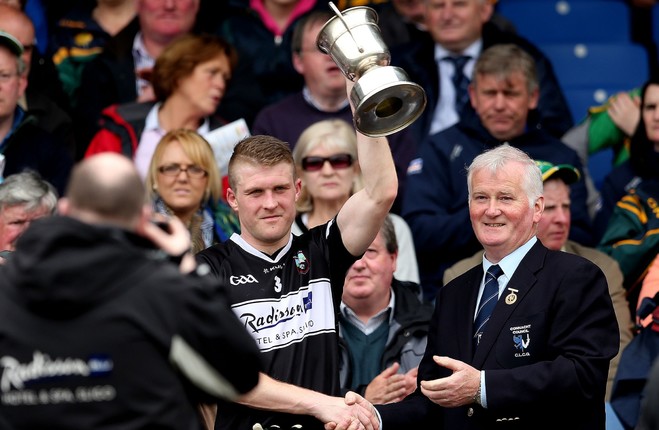AFTER SUFFERING A second stroke in January of this year, Sligo’s Johnny Martyn was still hopeful that his football career could still be salvaged. The initial conversations with doctors were promising but a phone call in May cut those final strains of hope to ribbons and he was told that his body had no more chances to give.
It was news he wasn’t expecting and the cruel sense of disillusionment that so often afflicts athletes who are forced to retire followed soon after.
“I got a call from the Sligo team doctor and he told me that after further consultations they said it would be better if I stopped because the medication I’m on is a blood thinner and if I get a bang, it could cause internal bleeding. I hadn’t played any games at that stage but I was gearing towards that.”
“I didn’t see it coming,” Martyn added. “The good thing is that I’ve had no effects and I’m fully healthy. It’s just there’s a huge gap in my life. You’re used to training and now it’s gone.
“The first couple of weeks, I didn’t mind and I was able to go out more. But then it sunk in and it was hard to take especially when there were games coming up with Sligo and the club.”
Martyn’s first stroke occurred at a Sligo training session a few days out from a championship game against Cork in 2014. The session was in its early stages when Martyn started exhibiting some of the classic stroke symptoms – mouth sloping to one side, and despite his attempts to communicate his despair, his lips could only produce silence.
He put his career on pause to let his body heal and had his eye on a restart in 2015. Ankle ligament damage brought that comeback to an abrupt end and when he came back the following year, he was looking towards completing a full season of inter-county football without any interruptions.
But while warming up to be introduced during an FBD League game, a similar sensation to the one he had felt two years earlier, resurfaced. The fact that this experience was less painful offered some hope that he could recover and go again in time.
“I can remember (2014) like it was yesterday but I try not to think about it too much. When it happened the first time, I thought I wouldn’t get back. But then I got an opportunity to come back.
“When it happened the second time, the fear was there and I just couldn’t believe it was happening again but it turned out to be a mini-stroke so it wasn’t as bad as the first one.”
The St Mary’s player can appreciate the aspects of his story that deserve to be celebrated. In addition to having no side effects from his health scares, the diagnosis still allows him to exercise so long as contact is excluded. But as he says himself, “he’s not one for going for a run or going to the gym.” In truth, there’s no real drive to find any other pursuits while he continues to linger for the one that has been a constant in his life for so long.
“There’s not much left outside of Gaelic football. It’s been my whole life. There were times when I was playing that I wouldn’t be looking forward to going training but now I’d love to be going.”
“It’s been hard not being involved. One of my best mates who I play with lives down the road so I see him a good bit but there’s other players that I don’t get to see so I do miss that dressing room spirit. I’m not 39 or 40, I’m just 35 and while I knew that last year was probably going to be my last year with Sligo, I thought I could keep going for a while longer with the club.”
There was a temptation to disregard the medical advice and play on with full knowledge of the risks, but that choice was taken away from him.
“To be honest if it was up to me, I’d be back playing. When they told me, I said I was willing to take the risk but I wouldn’t be insured so I had no choice really.”
Various causes can offset a stroke and while it seems bizarre that a high performance athlete could be stricken by something that is more commonly regarded as a consequence of poor lifestyle choices, it’s not a rare thing in sport. All these possibilities were laid out for Martyn during his ordeal.
“The doctors explained a good bit of it to me and when it happened the first time, blood clots were mentioned. We played Limerick in the previous game and I could well have gotten a bang and that could have had an effect. They told me as well about blood clots in rugby and American football.”
Apart from attending games as a spectator, Martyn has temporarily withdrawn himself from football. This is not the end, but rather an opportunity to engage with the sport in a new way. Sligo manager Niall Carew and his club manager have extended offers to him to join their respective backroom teams, and the prospect of that new challenge already seems to intrigue him.
“I’ll definitely get involved again next year. There’s plenty of underage teams in the club and there’s the county as well.”
The42 is on Snapchat! Tap the button below on your phone to add!

